cassini
Latest
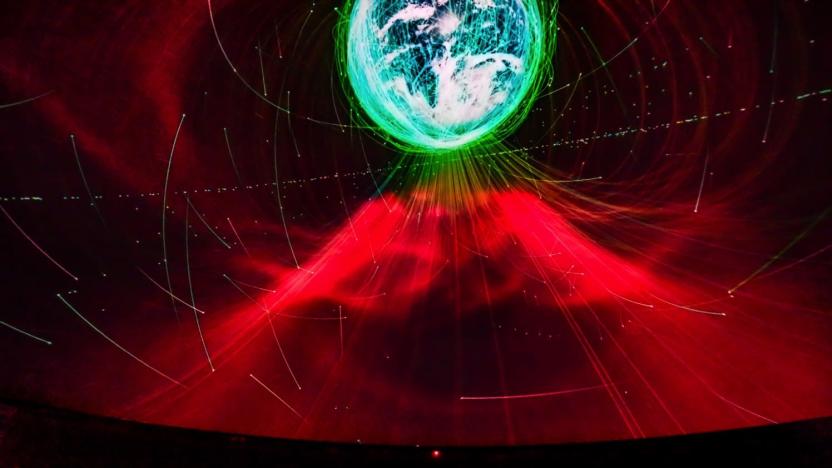
The Hayden Planetarium’s new show celebrates unmanned space probes
The astronomy I learned as a kid was pretty limited — the Earth revolves around the Sun and, of course, the whole "My Very Energetic Mother Just Served Us Nine Pizzas" thing. Of course, that expression no longer applies because our understanding of the solar system is a lot more nuanced these days. Not just because we're adults now, but because the entire field has been revolutionized by probes, plumbing the depths of distant bodies and returning that data to us over decades. That deeper understanding of our solar system is at the heart of the American Museum of Natural History's new space show, Worlds Beyond Earth, but its unsung hero is the technology that made it possible.
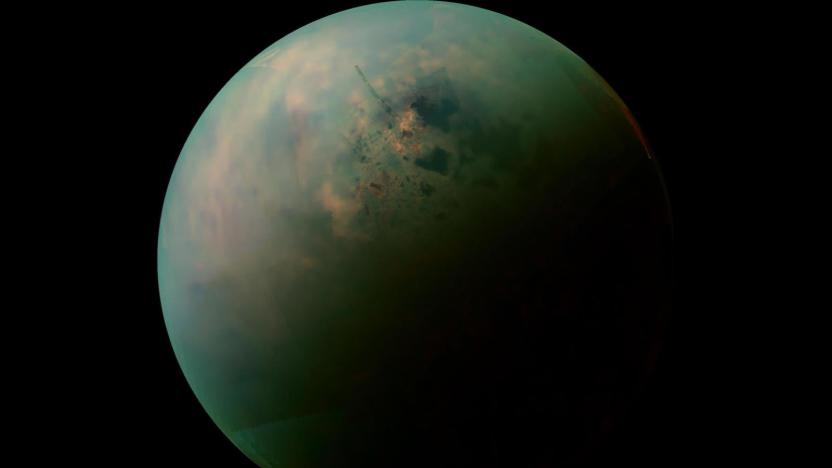
Astronomers create first global map of Saturn's moon Titan
Scientists finally have a comprehensive view of Titan, Saturn's largest moon. A team of astronomers has created the first global map of Titan by using the Cassini probe's over 100 fly-bys to stitch together both imagery and radar measurements. The comprehensive view reveals a landscape that's almost as diverse as Earth in key way.
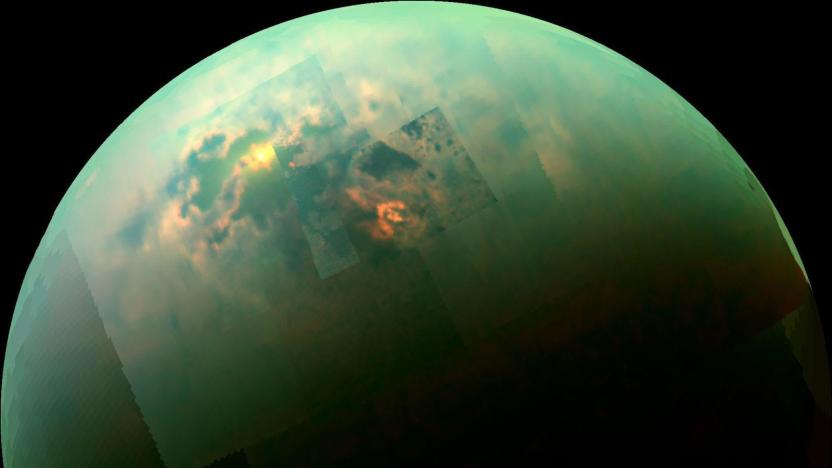
NASA’s Cassini data shows Titan’s lakes are stranger than we thought
NASA's Cassini-Huygens spacecraft made its fateful plunge into Saturn's atmosphere in 2017, but scientists are still using the data it sent home to make surprising discoveries. Two papers published in Nature Astronomy reveal new information about the lakes on Titan, Saturn's largest moon. The small liquid lakes in Titan's northern hemisphere are more than 100 meters deep, perched atop plateaus and filled with methane. They also appear to be seasonal. And the bodies of liquid on one side of the northern hemisphere are completely different than those on the other side.
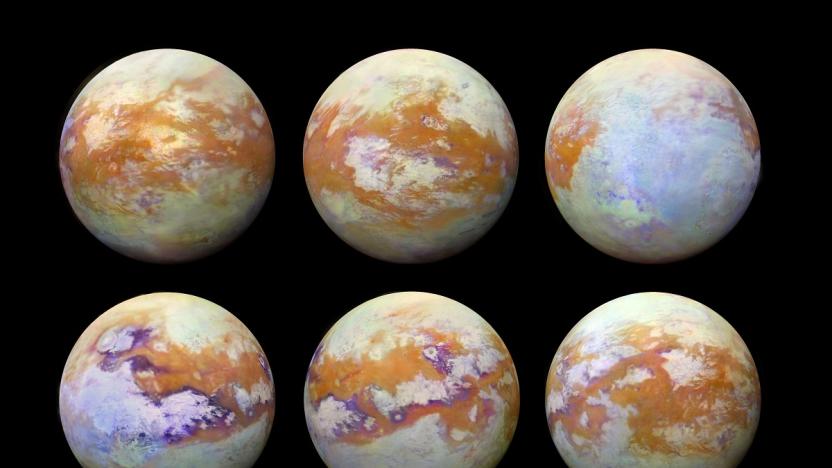
Breathtaking photos show Saturn's moon in a new light
Photos of Saturn's largest moon, Titan, have typically captured the muted, apricot tones of its nitrogen-rich atmosphere. But thanks to more than a decade of data gathered by the Cassini spacecraft, new photographs of an atmosphere-free Titan can show us the mesmerizing beauty of its surface.

NASA's Cassini probe bids farewell to Saturn with epic image
NASA's Cassini spacecraft was always destined to be a doomed hero. After two decades in space, diligently exploring Saturn and its many strange and beautiful moons, operators deliberately crashed the spacecraft into the planet to make sure the moons remain pristine and unaffected by debris. But not before the spacecraft took one final, breathtaking look at Saturn, which NASA has shared in tribute to the dedicated spacecraft. The image, "Farewell to Saturn", is a combination of 42 natural-color pictures showing a sweeping view of the planet and its rings. The image even captures six of the planet's moons, including Mimas, the so-called "Death Star" moon.

Cassini's life passes before its eyes in NY art exhibition
Cassini became a cultural touchstone not just because it was a useful and productive space probe, but because it completed a classic hero's journey. So it's fitting that an art exhibition presented by the WOW visual design studio at HGPRP Gallery in New York City celebrates the life of the probe not in technical, but abstract terms. "It's been said, just before a person dies their life's biggest moments flash before their eye," WOW writes. "Fleeting moments and flashbacks allow viewers to celebrate 20 years of Cassini's achievements in a very personal, non-linear, stylized exhibition."

Recommended Reading: Why Cassini had to be destroyed
Analysis: Why Nasa's Cassini Probe Had to Be Destroyed Fedor Kossakovski, PBS By now, you've likely read a bit about NASA's Cassini probe plunging into Saturn to end its tour of duty this week. You've also probably wondering why that had to happen. PBS breaks it down.
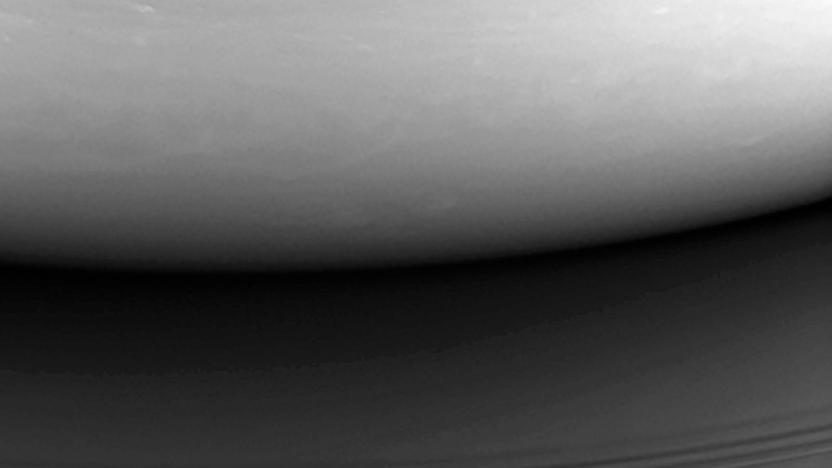
Cassini mission ends with final plunge into Saturn
At around 7:31 AM eastern time, the Cassini-Huygens spacecraft disintegrated and plunged into Saturn, becoming the only man-made object ever to touch our solar system's second largest planet. "The signal from the spacecraft is gone and within the next 45 seconds, so will be the spacecraft," said NASA JPL Cassini program manager Earl Maize. "This has been an incredible mission, an incredible spacecraft, and you're all an incredible team."
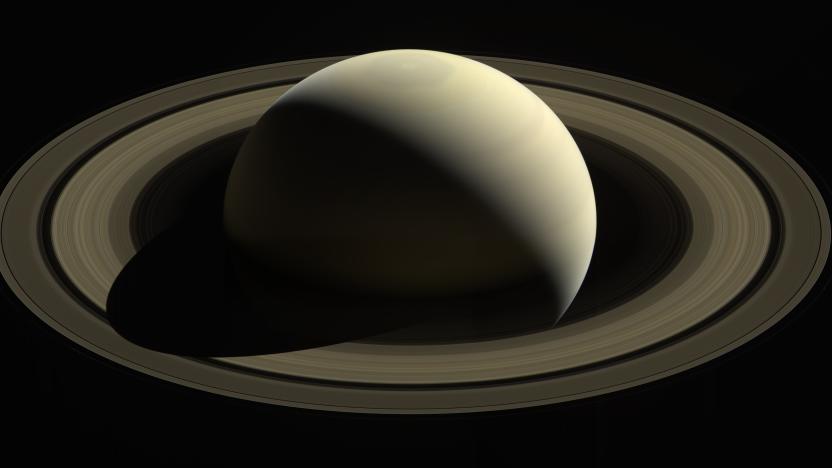
Nine of Cassini’s most exciting discoveries about Saturn
Saturn is something of a solar system unto itself (minus the requisite sun). It's surrounded by 53 confirmed moons and another 9 "moonlets," tiny worlds that are among the most exotic and diverse we've seen in this neck of the galaxy. For as much as we could see from our Earth-based telescopes, it was only by getting up close and personal with the system's second largest planet -- by sending a $3.4 billion science machine hurtling 8.88 million miles across interplanetary space -- that we were able to truly observe Saturn. And it's a good thing we did because the scientific discoveries have been near-constant in the 11 years since Cassini left home. We've seen the surface of Titan and watched its liquid methane flow, fall like rain into massive hydrocarbon seas. We saw the tiny icy moon of Enceladus reveal its 101 geysers which shoot hundreds of pounds of water ice and molecular hydrogen into space from a subsurface ocean. Think of the life we'll find in there! And above all, the Cassini mission helped us better understand the atmosphere and global mechanisms of Saturn itself. Here are nine of the most exciting scientific discoveries the Cassini mission brought about.

Follow Cassini’s final moments before it plunges into Saturn
For the last thirteen years, Cassini has been orbiting Saturn, sending back extraordinary images and data from the ringed planet and its moons. But now, it's time to say goodbye. Tomorrow, September 15th, the spacecraft will make its final fiery plunge into Saturn's atmosphere.
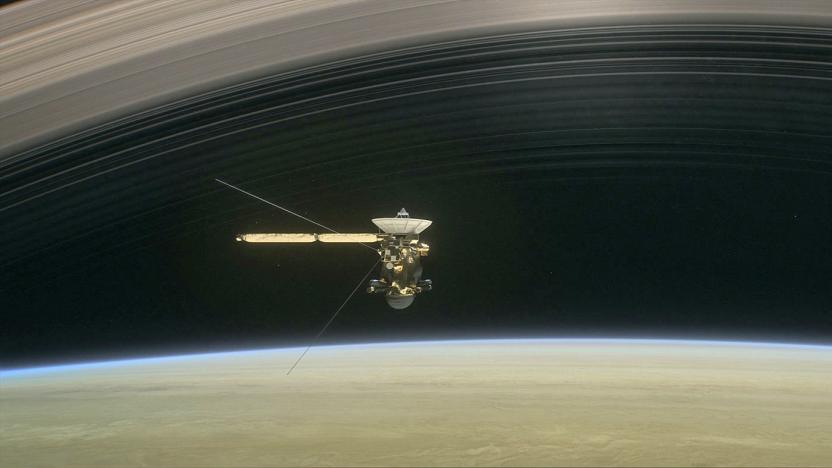
Cassini will take five victory laps before plunging into Saturn
Over the past few months, Cassini took the closest pictures of Saturn's rings we've ever seen that it was pretty easy to forget that the probe was nearing its end. It actually dove in and out of the rings to prepare for its poetic death, and now it's down to its last orbits around the planet. On August 14th, 12:22 AM Eastern, Cassini will begin its final five passes over Saturn, going as close as 1,010 to 1,060 miles above the planet's clouds to observe its auroras and finer features not visible from a higher altitude.
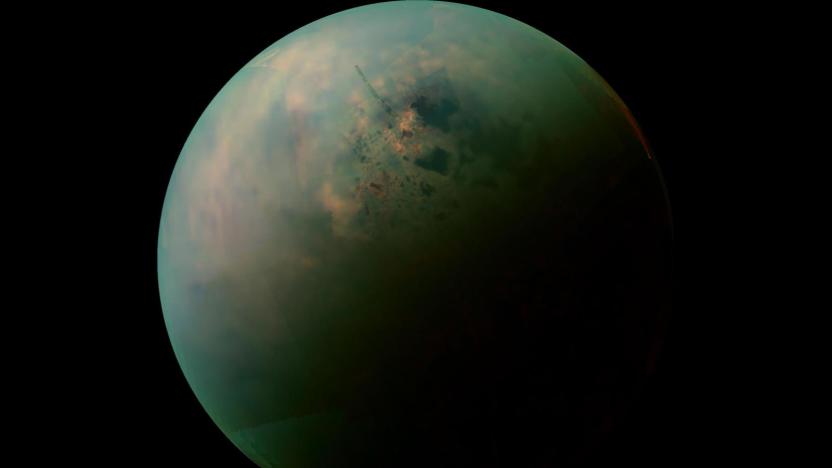
A molecule found on Saturn's moon Titan could foster life
In a new study published today in Science Advances, researchers report that they've found a complex molecule in the atmosphere of Saturn's moon Titan that could lead to the formation of life. Cell membranes are the outer barrier of most cells found on Earth and they, or structures like them, are crucial for life to form. And while Titan is quite different from our planet, it's thought that this molecule -- vinyl cyanide -- is one that could potentially form cell membranes in the Titan environment.

ICYMI: A prosthetic hand with two senses
Today on In Case You Missed It: We get our first close-up look at Saturn's rings thanks to the Cassini spacecraft -- which just completed the first of its twenty-two passes through the planets' famed hoops. NASA stitched together the images from the craft to give us Earthlings an incredible first-person (first-spacecraft?) point-of-view of the recent dive, which began at the north pole of the planet and moved down its side. The imaging team working on Cassini's trips expects to get even better data from the subsequent trips, which will gather information on Saturn's gravity and magnetic fields.
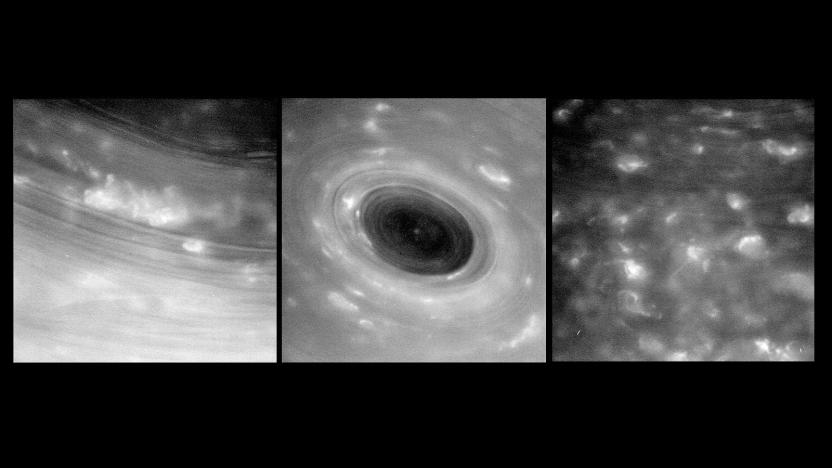
Cassini probe survives first dive between Saturn and its rings
NASA's Cassini probe has emerged unscathed after its first dive between Saturn and its rings. The spacecraft's ground team had to spend 20 hours wondering whether the probe was doing well or whether it plunged to its death a few months too early. Thankfully, it got back in contact with NASA at 2:56AM EDT today, April 27th. By 3:01 AM, it started beaming back precious data about the planet's atmosphere, including the unprocessed images of Saturn's features above.

Saturn and Jupiter's moon burps bode well for distant life
Scientists recently took a closer look at data over a decade old and concluded that two moons orbiting Saturn and Jupiter might have environments that foster life. During an October 2015 flyby of the ringed planet's moon Enceladus, the probe Cassini was hit by gaseous plume, which was likely a hydrothermal vent breaking through the iced surface. Scientists theorize that the spray is evidence of chemical energy for life to feed on. Thanks to sporadic evidence of plumes on Jupiter's moon Europa, NASA has announced that two locations in the solar system might support living organisms.

Watch a NASA simulation of Cassini's upcoming Saturn crash
On April 26th, NASA's Cassini probe will begin diving in and out of the gap between Saturn and its rings in what the agency calls its "Grand Finale." The spacecraft will orbit the gas giant it's been observing since 2004 22 more times before taking the final plunge into its atmosphere in mid-September. Since we won't be able to get a front-row seat to that show, NASA has released a video simulating the probe's last months, which you can watch below the fold. If that's not enough, you also download the "Eyes on Cassini" app for Macs and PCs so you can virtually ride on board the spacecraft and experience its last orbits and final plunge yourself.
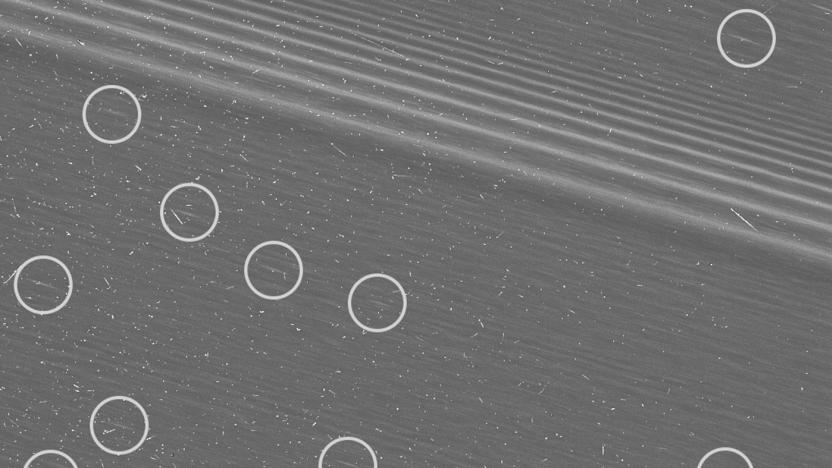
Cassini captures close-up views of Saturn's rings
NASA has released high-resolution close-up images of Saturn's outermost rings captured by Cassini as part of its penultimate mission. The spacecraft has been diving in and out of the rings every week since November, taking images that show features as small as 550 meters or around the same size the world's tallest buildings. That might not sound small from our perspective, but don't forget Cassini is taking photos of another planet. In the image above, the encircled parts show features called "propellers," which are bright disturbances caused by the gravity of moonlets embedded in the ring.
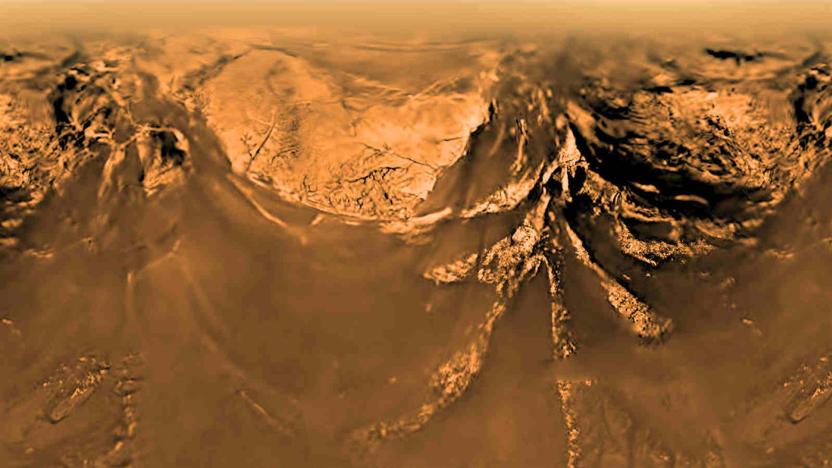
NASA video recreates Huygen probe's historic landing on Titan
Before NASA's Cassini probe captured the most detailed images of Saturn we've ever seen, it dropped its companion Huygens on Saturn's largest moon, Titan. The probe's historic landing took place on June 14th, 2005. Now, the space agency has taken the data and actual photos Huygens sent 12 years ago to recreate part of its two-and-a-half hour descent into Titan's hazy atmosphere. The video, which you can watch below the fold, features what the probe saw from an altitude of around 6 miles, including the moon's rugged highlands and deep ravines.

Cassini captures Titan's mysterious clouds on cam
It's business as usual for the Cassini spacecraft until it's time to say goodbye in September 2017, and some of the latest images it captured tell us more about Saturn's moons. The spacecraft's cameras, for one, produced two very different views of Titan's high northern latitudes. As you can see in the image after the break, one (the black-and-white photo) clearly shows the surface features of Saturn's largest moon. The other shows a moon whose surface is obscured by bright clouds. These were taken within the same period during the spacecraft's Titan flybys on June 7th and July 25th.
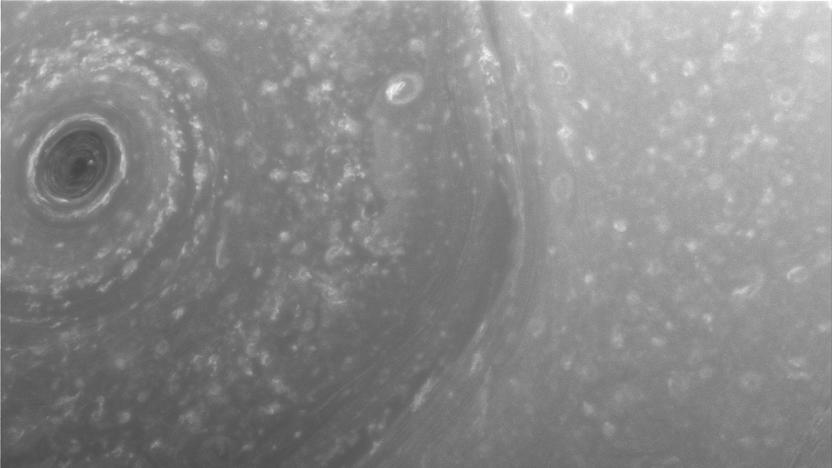
NASA's Cassini spacecraft sent photos of Saturn's north pole
As Cassini winds down its 20-year mission to Saturn, the spacecraft will maneuver into a series of weeklong orbits, allowing it to get a closer look at the planet's famous rings as it flies by. Although there are still a few days before Cassini grazes Saturn's rings, its cameras have already sent back some initial shots of some interesting features near the planet's northern hemisphere.












